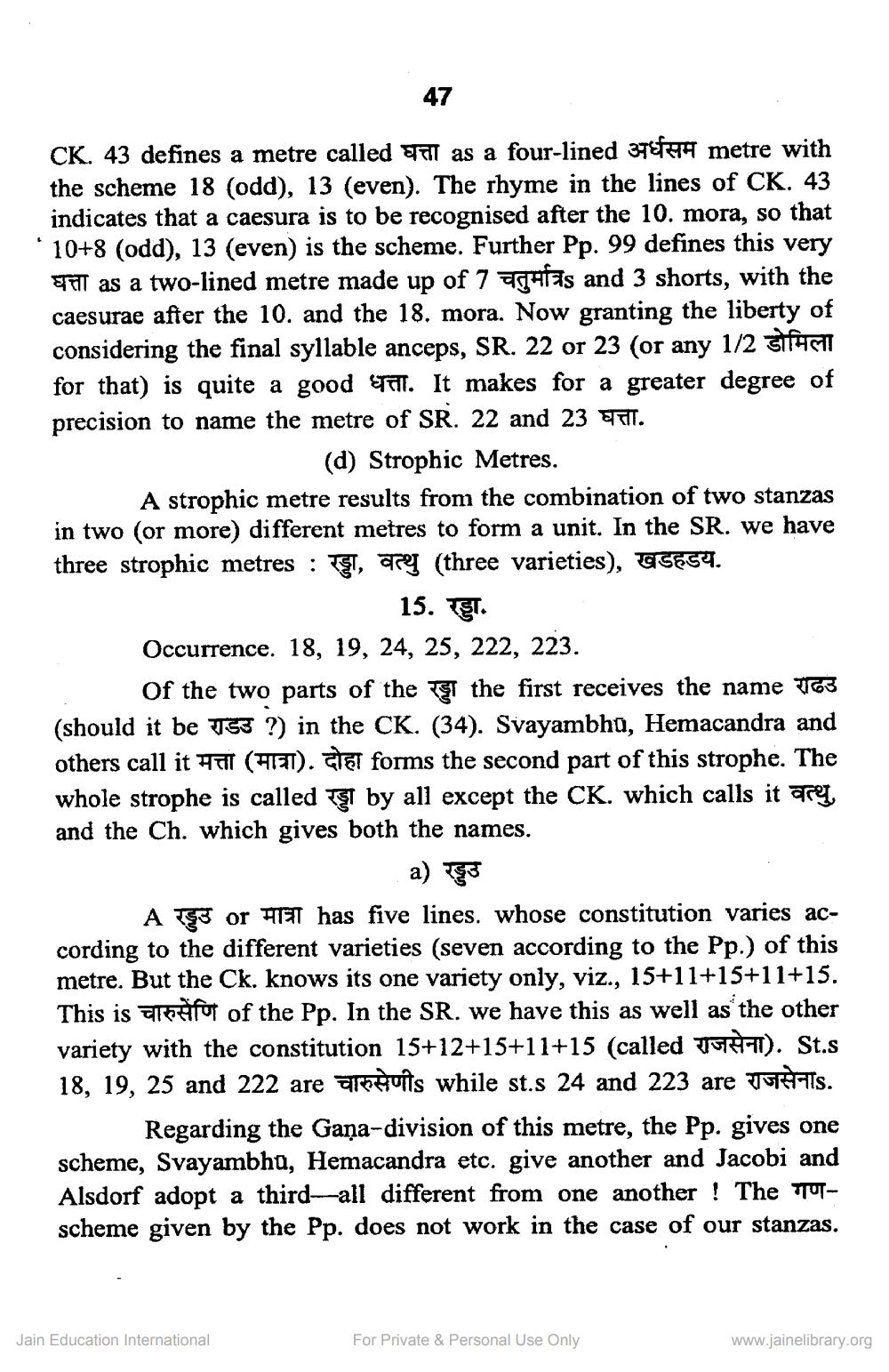________________
47
CK. 43 defines a metre called as a four-lined 4 metre with the scheme 18 (odd), 13 (even). The rhyme in the lines of CK. 43 indicates that a caesura is to be recognised after the 10. mora, so that 10+8 (odd), 13 (even) is the scheme. Further Pp. 99 defines this very
as a two-lined metre made up of 7 agafas and 3 shorts, with the caesurae after the 10. and the 18. mora. Now granting the liberty of considering the final syllable anceps, SR. 22 or 23 (or any 1/2 for that) is quite a good . It makes for a greater degree of precision to name the metre of SR. 22 and 23.
c
(d) Strophic Metres.
A strophic metre results from the combination of two stanzas in two (or more) different metres to form a unit. In the SR. we have three strophic metres : रड्डा, वत्थु (three varieties), खडहडय.
15. रड्डा. Occurrence. 18, 19, 24, 25, 222, 223.
Of the two parts of the the first receives the name 3 (should it be 53 ?) in the CK. (34). Svayambhu, Hemacandra and others call it मत्ता (मात्रा). दोहा forms the second part of this strophe. The whole strophe is called by all except the CK. which calls it r and the Ch. which gives both the names.
a) रड्डउ
A 3 or E has five lines. whose constitution varies according to the different varieties (seven according to the Pp.) of this metre. But the Ck. knows its one variety only, viz., 15+11+15+11+15. This is for of the Pp. In the SR. we have this as well as the other variety with the constitution 15+12+15+11+15 (called). St.s 18, 19, 25 and 222 areas while st.s 24 and 223 are IÀTIS.
Regarding the Gaṇa-division of this metre, the Pp. gives one scheme, Svayambhu, Hemacandra etc. give another and Jacobi and Alsdorf adopt a third-all different from one another! The TTscheme given by the Pp. does not work in the case of our stanzas.
Jain Education International
For Private & Personal Use Only
www.jainelibrary.org




